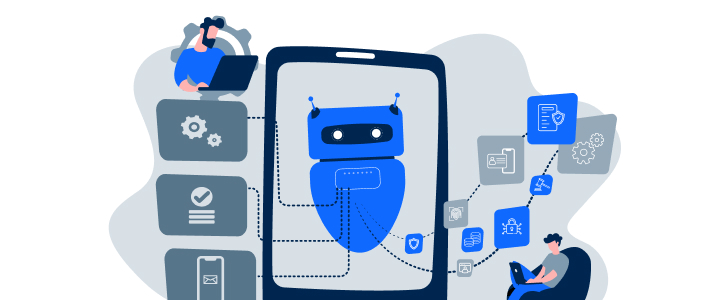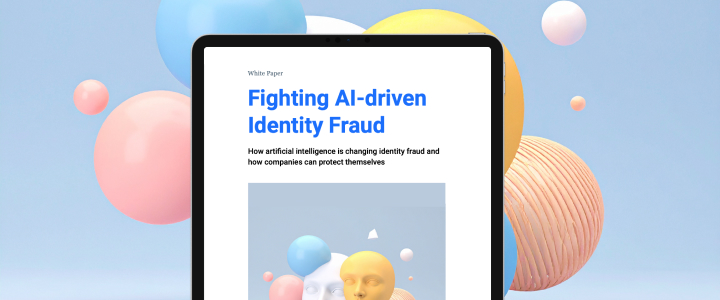Innovation through participation
E-government // For an innovation project to succeed, end users must play an active role in shaping it. Digital Public Services Switzerland is supporting various innovation and participatory projects in the public administration sector. The aim is for the Confederation, cantons, and municipalities to advance the digital transformation together with the country’s residents and other stakeholders. Let’s take a look at two of these projects.
Town of Uster: Expanding digital services
In 2022, the town of Uster embarked on the uster.ch upgrade project. It wanted to expand and improve its website and digital services. Uster’s overall goal is to be “a town for everyone.” True to this mission, the pro-ject managers made a crucial decision: they involved Uster’s residents in the development process.
Together with ti&m, Uster came up with a vision for the town’s new, customer-centered e-service portal. The project team needed to define the needs of the website’s future users – the residents of Uster. More importantly, it was vital to involve them in the process. The project team therefore adopted a participatory approach. This resulted in mein-uster.ch (my Uster), a participatory project. It launched in mid-2022 with support from Switzer-land’s federal government (Digital Public Services Switzer-land). This enabled the town of Uster to team up with other partners from academia and business. They included the company Konova, the ZHAW School of Management and Law, and the egovpartner office.
During the participation process, all the stakeholder groups in the town of Uster had the chance to voice their needs and wishes. They were able to discuss their requirements with regard to a new website and the e-service portal and evaluate proposals. Over the course of four weeks, more than 130 people participated in defining the solution. They primarily provided their input digitally, but some also participated offline. Based on these insights, the team developed a consolidated vision for a digital e-service portal. Moreover, they could be confident that it had broad support. At the same time, the findings serve as the basis for further developing the town’s website. They are crucial to the ongoing participatory approach to the uster.ch upgrade project. This upgrade aims to create a simple, better, and faster process for launching and managing new digital services from end to end.
High expectations on service quality
Participants contributed, discussed, and evaluated over 30 ideas using the publicly accessible ideas board. Some specific proposals attracted great interest: developing digital services and components for an e-service portal as well as digital ID and signature services. And it became very obvious that users have high expectations of the quality of the services. They want simple and efficient digital services – where possible automated services. They expect high data protection standards. That means transparent information on how collected data is used. But it also calls for data minimization (the website should request user data only where necessary). Ensuring accessibility was another key aspect. Users also wanted to be able to access the services on a smartphone via an app and on a desktop computer (multi-device approach). The mein-uster.ch participatory project was a new venture for the town of Uster: this was the first time it had relied primarily on a digital format (namely e-participation). The format was available anytime and anywhere. This made it possible to involve diverse stakeholders and a large number of contributors in the solution. Going digital also minimized the effort involved. Above all, it ensured that the project had broad support from local people. The town of Uster firmly believes that all residents should have the chance to get involved in creating the new solution. It recognizes the project’s value: high-quality results will enable it to respond to the needs of diverse stakeholders. And this will ultimately benefit the town administration in the long term.
Virtual reality: Inside city hall with data glasses
From data glasses, to 3D avatars, to the metaverse – virtual reality offers groundbreaking possibilities. But what opportunities and challenges does this present for future administrative services for citizens? The goVR project at OST – Eastern Switzerland University of Applied Sciences is exploring this very question.
Virtual reality (VR) applications primarily consist of computer-generated visualizations that users experience via special glasses. These applications have now arrived on the mass market. VR glasses and VR app stores are avail-able, and all the big IT players are working on ambitious VR projects. VR visualizations offer clear advantages for games and product presentations. The implications for e-government services on the other hand remain unclear. The goVR project at the Institute for Information and Process Management (IPM) at OST aims to address this issue. Its goals include defining the requirements for VR government services and implementing a VR prototype for a model service.
In its initial phase, the project interviewed eight e-government and VR experts. This allowed the project team to take a multidisciplinary look at the potential applications of VR in digital administration. The interviews provided insights into the fundamental requirements for future e-government services and their opportunities and possibilities. But the conversations also shed light on the risks and challenges associated with such services. One of the key topics was how to reliably identify users: how can the identity of a person or an avatar in VR be unambiguously verified? This is an essential step before any public institution can offer useful, personalized services. The interviews also highlighted the issue of data security when using existing VR platforms. In addition, the consulted experts emphasized the need for transparency on data privacy. VR applications for government services should communicate clearly how personal data are handled.
Turning municipal meetings and construction projects into VR experiences
Providing information to residents and involving them in municipal processes is one potential area of application for VR technology in administrative services. The interviewees described the possibility of introducing virtual information desks. This would reduce the time and expense involved in travel. Similarly, they mentioned using virtual forums for meetings and participatory processes. These virtual spaces could open up new possibilities for people with limited mobility, for example. In addition, the experts highlighted the potential for participatory spatial development projects in particular. Municipalities could create realistic representations of buildings in the early planning phases. This would allow citizens to experience them.
On the subject of risks and challenges, using VR technology might not be seen as “serious.” Some of the experts voiced this view, largely because current applications focus on entertainment. This perception could be a barrier to citizens’ acceptance of VR government applications. And although hardware prices are falling, the interviewees emphasized that VR glasses are still too expensive for many. Widespread use remains some way off. In addition, health challenges could also arise. Regular use of VR applications could put employees in public administrations at risk. Finally, the experts underscored the current legal uncertainties.
Digital city hall in VR
In the next stages of the project, the team developed the idea of a virtual city hall. Here they drew on the findings from the interviews and discussions with representatives of the city of St. Gallen. Such an application would enable a realistic tour of the building in virtual reality. Info points could explain the offices’ services or even offer them digitally. The next step involved creating a realistic visualization of the city hall for an initial prototype. The innovation project used 360° panorama photos similar to those on Google Street View for this. The current prototype supports testing with the city’s residents. The project team will then be able to examine how existing digital government services can be used and integrated in the virtual city hall.







